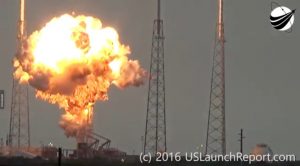 Specialising in High-tech Insurance, elseco was established in 2006. Today, elseco is the largest space insurance player in the world with a capacity of more than USD200m (More than twice its closest competitor). The company adopts an intelligent approach to risk management, pioneering market risk analysis and sophisticated ‘made for purpose’ underwriting products. Though built on traditional methodologies, the company is driven by an entrepreneurial mind-set, enabling elseco to create a diversified, high-tech, specialty insurance platform.
Specialising in High-tech Insurance, elseco was established in 2006. Today, elseco is the largest space insurance player in the world with a capacity of more than USD200m (More than twice its closest competitor). The company adopts an intelligent approach to risk management, pioneering market risk analysis and sophisticated ‘made for purpose’ underwriting products. Though built on traditional methodologies, the company is driven by an entrepreneurial mind-set, enabling elseco to create a diversified, high-tech, specialty insurance platform.
The company is also initiator of the World Space Risk Forum. Torsten Kriening speaks to Laurent Lemaire, Chairman and CEO and Ali Asghar, COO of elseco to find out more about this fascinating – and critical – part of the space sector.

How has the fact that space has become more accessible in recent years affected your business?
Space is becoming more accessible primarily due to the involvement of private investors, especially from the West Coast of the U.S and the introduction of new launch vehicles that has brought down the cost of launch. One of the consequences of space becoming more accessible is that there are now a number of projects that involve small satellites. These types of projects can be developed and launched quickly. We are looking closely at this additional business coming into the mix and also into how much risk this brings in. These smaller satellites are typically from relatively new manufacturers and at times less tested and therefore may have a larger risk profile. Cost and access to insurance is important in such cases, and at elseco we are exploring an online platform for small satellite insurance. The interesting development with small satellites is the renewed interest in constellations. You have more volume on one hand and more risk on the other. But at the same time, the volume would probably lead to reduced risk in the longer term.
On new launcher vehicles, SpaceX has come into the market with a more cost-effective alternative to some of the more established launch service providers and I think they have done a good job so far. There was a recent loss, as we know, of AMOS 6. But, overall, the outlook is positive. The processes for a relative start-up are not the same as for an established player so it is harder to forecast the future just based on the past. In the case of SpaceX and a number of space start-ups, there is also the drive to continuously improve systems and processes, and as a result things have the potential to change all the time. SpaceX is investing a significant amount of capital into their plans. Will all those plans be successful? That’s another question. But for us, we see their involvement as a positive. It is always good to see people willing to create new things to disrupt the market and create new ones.
There is also more general awareness of space. It’s in the news and people talk about it a lot. There is a lot of curiosity from elseco members and we find that the knowledge that our members have of space and its risks is a lot more than it was perhaps ten years ago. This helps our business to an extent because our members are more aware of the sector and are willing to invest further and also means that more insurance companies enter the market.
Going back to SpaceX, they are planning to develop a large constellation of small satellites and launch multiple satellites (ten or more) at a time aboard their Falcon launchers. To enable large constellations, SpaceX does not only need to reduce the cost of launch, but also increase the frequency of launches. SpaceX have recently demonstrated such a multiple satellite launch for Iridium NEXT and they also forecast an ambitious launch manifest. As satellite launches become more available and the overall costs comes down, new business models have become accessible which means that the increased number of launches and satellites need to be insured. So it’s a virtuous cycle. There is more business coming in. We don’t know the quality of that business because it is still nascent, but our members are more aware and keen to get engaged.
I also think that space resonates with people. The state of what is happening on Earth is a bit complicated and looking at the sky and thinking about a future mission, gives some hope. I think that is probably why the UAE Mars Mission is called Hope. I think in today’s world, space helps us to stay positive. The fact that there is more awareness worldwide is a good thing in today’s world.
How have launch premiums been affected following the loss of the AMOS 6 during static fire testing on the SpaceX mission in September or have prices remained fairly stable?

The space insurance market is a fairly small market so when there is a loss like that there is a bit of a reaction – especially when you consider that the amount of that loss was about 50% of the total annual space premium. In terms of that particular anomaly, this was not a space launch (which is defined as an intentional ignition to launch), hence not covered by the space insurance market, but was covered by the pre-launch market. Pre-Launch is a distinct, but smaller part of the insurance market, falling in the Marine Hull segment, and includes transportation, manufacturing, testing up to the launch phase.
For SpaceX, unfortunately this was a bit of an image loss. By most estimations, the Pre-Launch insurance market will need about 20 years of premiums to pay back that loss. Whilst the AMOS 6 explosion did affect the general space market, due to fact that the Falcon 9 launches following AMOS 6 were postponed, meaning loss of income, it also had an effect on the space insurance market. This was due to the fact that the space insurance market realised that a company like SpaceX was changing their processes in terms of manufacturing and design and pre-launch testing. That has an effect on risk and affected the way the market viewed SpaceX. Again, the reason why the insurance premiums have not changed that much is because the Pre-Launch and Space Insurance are two different markets. Space insurance starts with the ignition and intention to launch. This was a static fire test that included the satellite on top of the launcher. As a result, SpaceX are re-evaluating their static fire procedures in which the satellite will not be attached to the launcher.
What difference have private investors and private initiatives made to the space industry?
I think that more start-ups entering the market is a good thing. If you look at the vision of Elon Musk to launch 1,000 satellites in one year, it’s a pretty bold vision but you need that vision to attract capital. It’s true that the more activity you have, the better it is for the industry. As a principal everything is insurable, but there is a price for it. Insurers used to say that, for a new launcher, you will get a loss over the first three launches. One out of the first three launches would fail. However, when you look back, the reality is that some companies have been able to launch a new vehicle without any losses. Some have been able to do thirty of them without one loss. So I think that today you don’t have to experience a failure to qualify your launcher. These new launches are analysed by the market. Some people will probably not insure them, some will insure them with caution. It is true that something that isn’t tried and tested is always perceived as being riskier. The job of insurers is not to finance R&D. It is to take the best price and to smooth the results of space players so that they are able to get more financing and go further. Our job is to help this industry to develop. We need to please the capital behind us and to please our clients who need insurance in order to take off. Our job is to support the people that are willing to create value within this industry.
In the past, it was ESA, NASA – and other government space agencies that were funding the programmes. But the agencies go at their own rhythm and there is always the uncertainty of budget cuts. However, with private players and tech entrepreneurs coming into the market, the funding base has increased. While NASA has not yet come up with a new launcher, SpaceX, primarily funded by Elon Musk, developed a launcher and leveraged government contracts. The rate of development of space technology and programs with these new players coming in has accelerated. That has been a very positive thing.
What is the percentage ratio between launch insurance and operational/in-orbit insurance?
The insurance market insures the launch, and the in-orbit testing and then the life of the satellite, 15 years for geo-stationary satellites and less for low-earth satellites. In today’s market, if the launch plus one year is 100%, one year in orbit is roughly ten times lower. If it’s 100% – launch and one – (depending on the launcher and satellite) you would be roughly speaking about 45% for the launch phase only, 45% for the in-orbit testing and 10% for the first year in orbit. So, 100% in the first year and then a little less than 10% every year after that for 14 years after the first year for geo-stationary satellites. If you look at the size of the market let’s say it’s between 650-700 million USD of premium coming in, 85% would be launch plus one, 15% would be in-orbit.
Will be continued!
Original published at: https://spacewatch.global/2017/03/elseco-part-1/
 SpaceWatch.Global An independent perspective on space
SpaceWatch.Global An independent perspective on space

